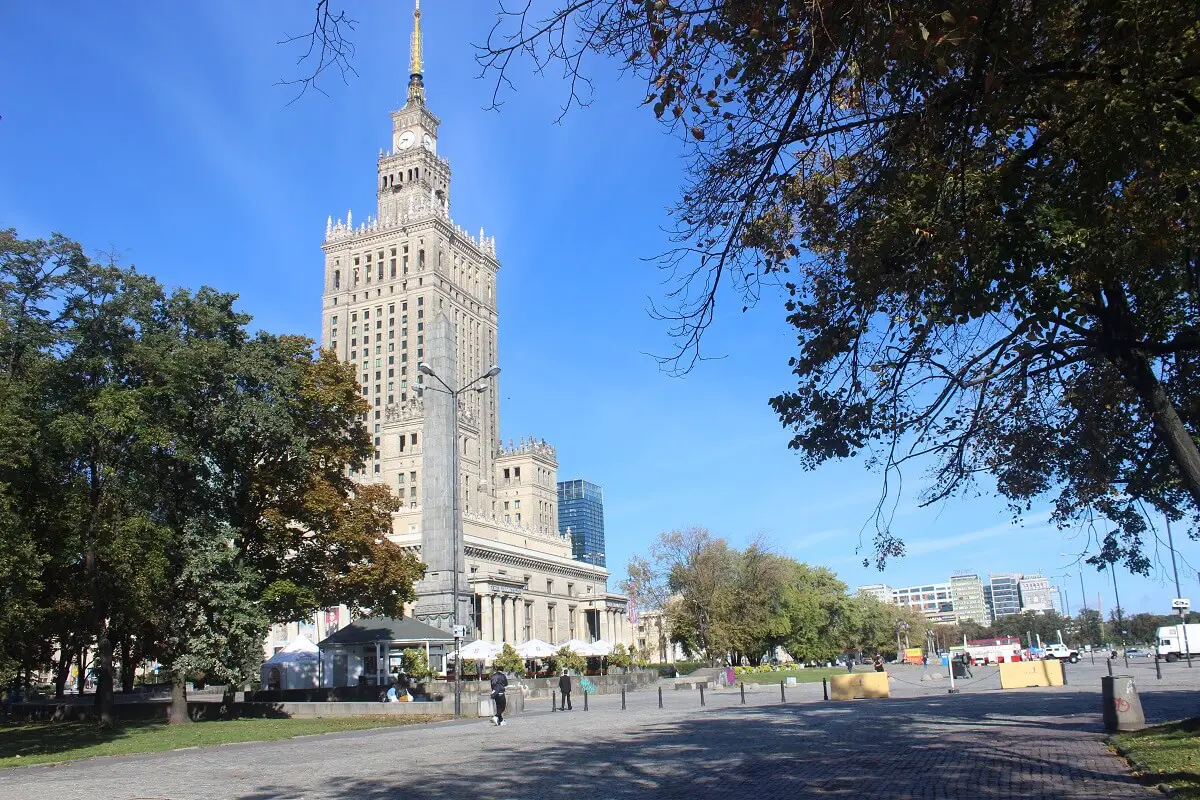
At the end of World War II, Russia established its hegemony over Eastern Europe. The communist regimes took over not only parts of Asia and Cuba, but also half of Europe around 1950. They lasted for more or less 40 years. During this time, people’s life changed completely. Communism established a system of control based on murders, terror and maneuvering. Most East European countries have nowadays at least one place we can visit to learn more about this “slice” of history. Red tourism tours and sights attract more and more tourists lately and this is a good thing, as only learning about the past, there’s a chance we won’t repeat the same errors.
Here are some of the most interesting museums and places related to communism in Europe. Most of them have already been integrated in red tourism tours and present history from several perspectives. Some focus on cars common during the communist era, while others on daily life, political prisons or neon signs.
Communism and red tourism in Europe
Berlin Wall, Berlin, Germany
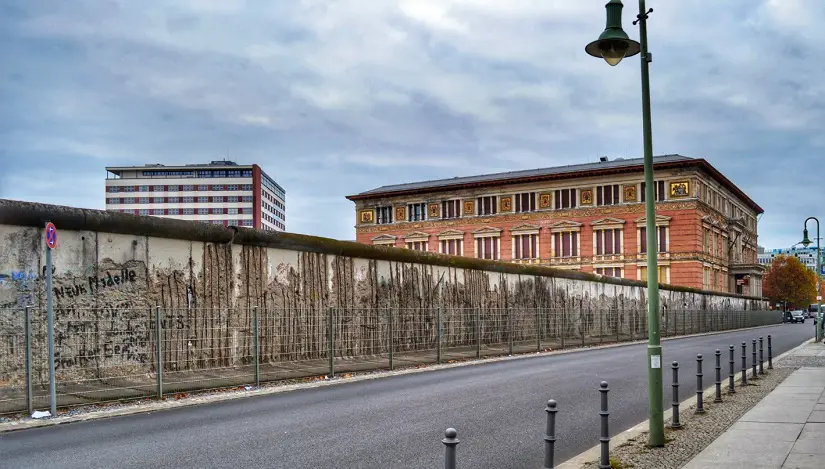
When visiting Berlin, a must see site for every single traveler is, of course, the Berlin Wall.
After WWII, Berlin was split between East and West Germany. But there was no natural divider amongst the two very different ideological systems. During the Cold War, the German Democratic Republic (East Germany), which was controlled by the Soviets, did not want the people on their side to flee to the “free” West Berlin. This resulted in the Berlin Wall, a 43 mile km barricade, being built. But the wall is actually less than 4 meters high. Therefore, things like landmines, watch dogs, and soldiers ready to shoot anyone who tried to escape were needed.
And then much of the wall came crumbling down when the people had enough in 1989. However, to this day, sections of the wall still remain up as a reminder of the dark history of this country. But not all sections are completely somber. For example, the “East Side Gallery” has been turned more into a living artwork rather than symbol of division. Visitors to Berlin today can walk any section of the remaining wall for free and at any time.
Recommended by LeAnna Brown of Wander In Germany
The Palace of Tears, Berlin, Germany
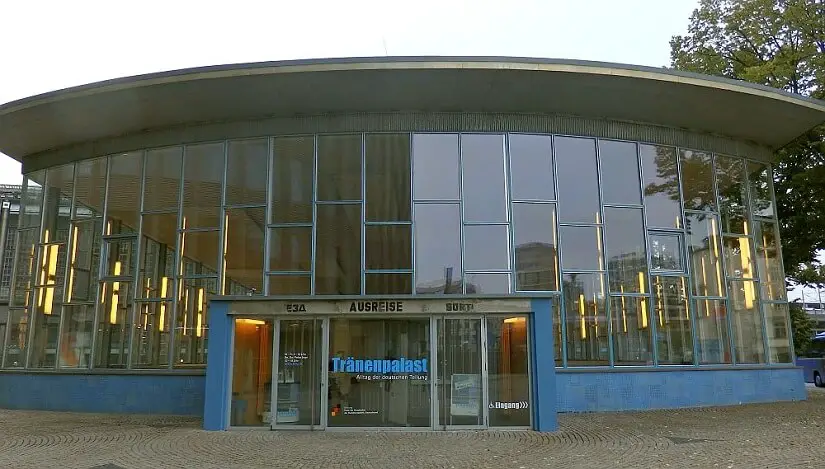
“Palace of Tears” is today’s name for this small museum, but it was originally a nickname. In the Cold War, it was an East German addition to West Berlin’s Friedrichstraße train station, and it was where East Germans leaving East Berlin said their good-byes to family and friends. Even those who left legally through this station could never be sure if they’d see their loved ones again, hence the tears.
Built in 1962, Berlin’s Palace of Tears remained connected to the West Berlin rail system throughout the Cold War, even though it was on the East German side of the Berlin Wall. The East German government wanted to keep a close eye on anyone leaving on official business, so this addition allowed them absolute control.
The building is still in its original state – a stylish 1960s design – yet different from other train stations. The floor is lower than ground level, so that despite the huge expanses of glass, the travelers would not be able to see out and passers-by could not see in. The narrow immigration control booths are designed to intimidate. Once through passport control, a confusing maze led passengers to the west.
Today, various small exhibits explain what happened here and how the government controlled its people’s movements, as well as chronicling the efforts that led to the eventual fall of the wall.
Open Tuesday-Friday 9:00-19:00 and Saturday and Sunday 10:00-18:00. Admission is free and so is the audio guide, which is very helpful.
Recommended by Rachel Heller of Rachel’s Ruminations
Grutas Park, Lithuania
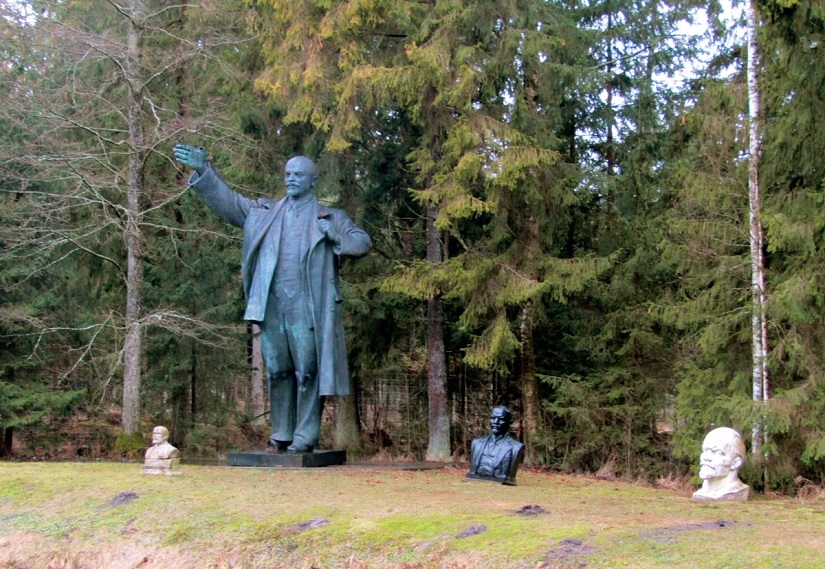
Grutas Park is an open-air museum and sculpture park of Soviet-era statues located near Druskininkai in Lithuania. It was created by Viliumas Malinauskas, who drained the swamp on his property to put the statues — as no one really knew what to do with all the old Soviet statues in the country.
The aim of the museum is to educate people on the Soviet regime and Lithuanian history. There are two main routes. The first one takes visitors past many statues of famous Soviet leaders, such as Lenin and Stalin. The second route focuses on Lithuanian Soviet leaders and heroes, and more local history.
Some of the buildings on the site are museums, which house exhibitions on Soviet life and culture. The greenery, walkway, and watchtowers are meant to imitate what gulags (prison camps) were like in the Soviet Union. There is a café on site, which serves traditional Lithuanian food along with some classic Soviet dishes, a gift shop, a playground, and a small rather sad-looking zoo.
Entry is €10 for adults, €6 for kids age 6-16, and free for kids under 6. Grutas Park is open daily, in winter from 9am to 5pm and from 9am to 10pm in summer. It’s possible to visit Grutas Park as a daytrip from Vilnius with public transportation. Take a bus to Druskininkai and let the driver know you want to get off at Grutas. From the main road, it’s a 20-30 minute walk to Grutas Park.
Recommended by Maja of Away With Maja
Museum of Soviet Vehicles, Järva-Jaani, Estonia
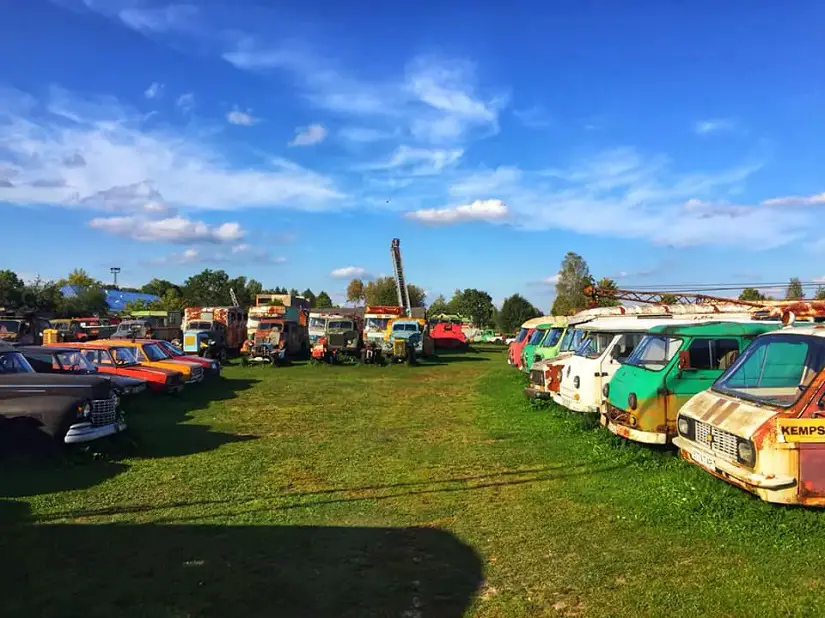
The Museum of Soviet Vehicles is one of the most obscure places you can visit in Estonia but it’s also one of the best. What makes this museum so special is that it’s not a museum in the conventional sense. No, it’s a collection of Soviet vehicles in a huge field. It’s certainly not the Louvre! But that adds to its charm.
To get to the museum, you’ll need a car. It’s located in the small town of Järva-Jaani, just over an hour away from the capital, Tallinn. There’s no opening or closing time, nor is there an entry fee, although you can leave a donation as you enter. You simply turn up, make your way into the field and start walking around.
Once you’re inside, you’ll be overwhelmed by the sheer number of cars. There are hundreds. From buses to fire trucks and small vehicles, there are many examples of Soviet vehicles. They give you a feel for what the average street might have looked like during Communist rule. The great thing about the museum is that the vehicles are all open and you can sit in them and imagine yourself cruising down the highway.
This museum is unique. You’re unlikely to find such a complete collection of Soviet vehicles anywhere else in the world. If you’re fascinated by life in the Soviet Union, or want to learn more about its history, this museum is a great visual guide to a bygone era.
Recommended by Tom of The Travelling Tom
The Corner House, Riga, Latvia
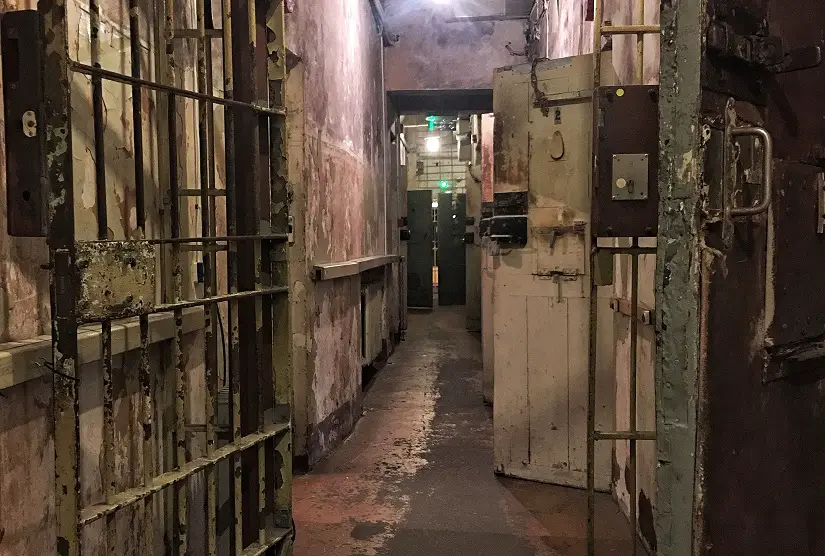
One of the best things to do in Riga is visiting The Corner House. This museum – located in a former KGB building – is an incredible place to learn more about the difficult past of Latvia and the time of the Soviet occupation.
The name “Corner House” takes from the actual location of the place – the corner of a street in central Riga. The very building used to be a prison during Nazi occupation. When the Soviets invaded Latvia it was used by the regime to interrogate, torture and imprison – and eventually kill – political opponents. Relatives of people who had mysteriously disappeared would regularly go to the building to enquire whether their loved ones were indeed being held there. Often they didn’t get an answer and knew that most people who were imprisoned there would never make it out.
The museum is open daily (save on national holidays) from 10:30 am to 5:30 pm and admission is €10. You can first see the exhibit which is free for all to see. Then join a guided tour around the building which will provide insightful information on the building and what went on inside.
Recommended by Claudia Tavani of My Adventures Across The World
House of Terror, Budapest, Hungary
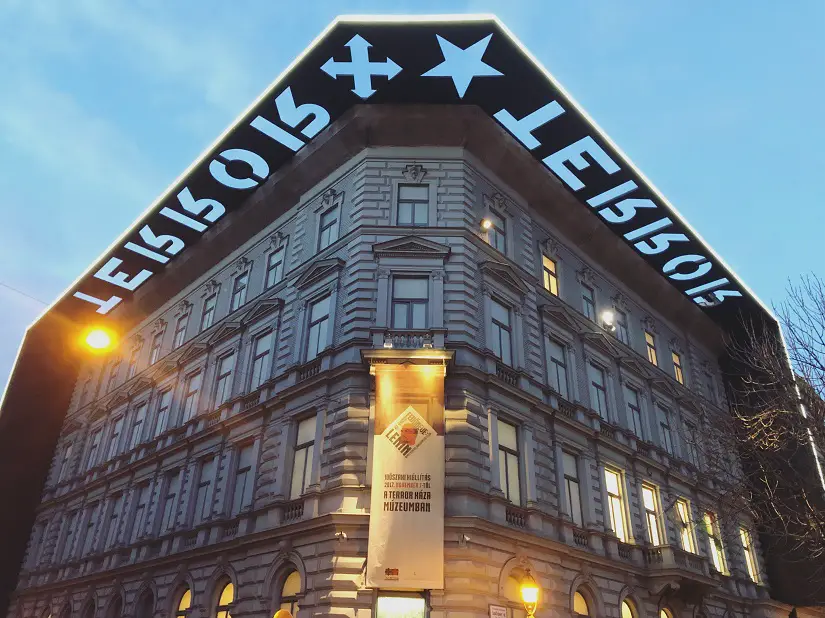
The House of Terror is a museum and a memorial that tourists must visit if they go on a city walking tour in Budapest. It is dedicated to the political victims during the tragic period in Hungary’s 20th-century communist history.
In 1944, the Hungarian Arrow Cross Party dominated the country. This house was known as the “House of Loyalty”, serving as a headquarter of the Hungarian Nazis. Between 1945 and 1956, the communist terror organizations, and AVO and its successor, the AVY, took up the residence of the house.
Here, you will see evidence – pictures, interview videos, and visual exhibits, for visitors to know what happened and what life was like during the socialism terror after World War II. It is a reminder of the dreadful acts of terrorist dictatorships. The vividly designed exhibition rooms have a powerful visual impact, especially knowing that people’s food supply was monitored and they were forced to show loyalty to the leader. The museum’s exhibition is in Hungarian. In order to learn more about its history, you should take an audio tour.
The museum is located on Andrássy Avenue in Budapest’s city center. Opening hours: from 10 am to 6 pm daily, except Mondays.
Recommended by Kenny of Knycx Journeying
Memento park, Budapest, Hungary
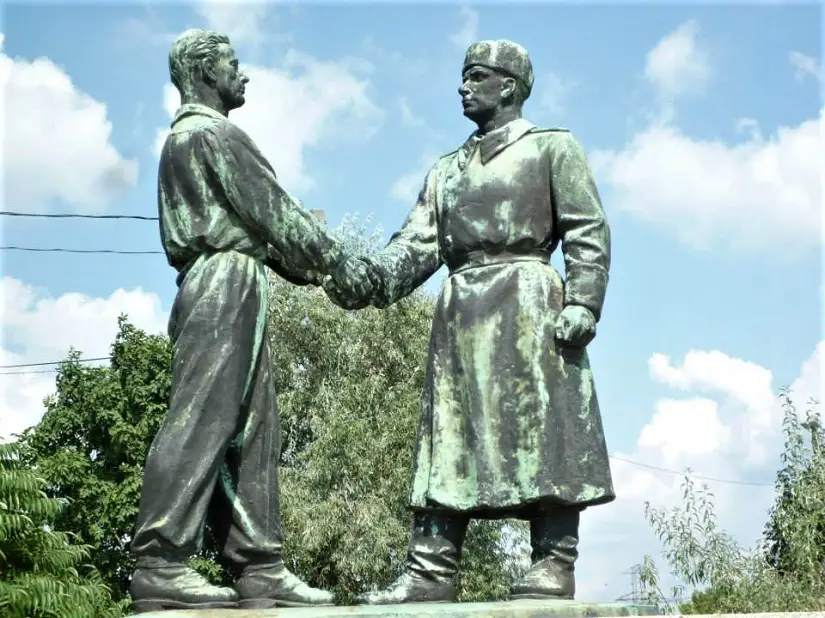
Memento park in Budapest, Hungary, is one of the more interesting ways of dealing with the country’s authoritarian history. It is essentially a place where all Hungarian communist statues went to die. Instead of destroying them, Hungary decided to relocate them to a large park on the outskirts of Budapest. This can be easily reached via public transport (bus No. 150) in about 20 minutes.
There are over 40 communism-era statues in Memento park and the feeling of walking through such a monumental statue graveyard is surreal. They are displayed so that they are neither honored nor mocked. To quote the park’s architect: “This park is about dictatorship. And at the same time, because it can be talked about, described, built, this park is about democracy. After all, only democracy is able to give the opportunity to let us think freely about dictatorship.”
Memento park is open from 10 am to dusk all year round and the entrance fee is 1500 HUF (about 4 €). There’s also an old Trabant car at the entrance as a photo spot and perhaps most interestingly, a replica of Stalin’s boots, the only remainder of a giant Stalin statue from Budapest that was pulled down during an anti-communist uprising in 1956.
Recommended by Petra from Erratic Engineeress
Nowa Huta, Kraków, Poland
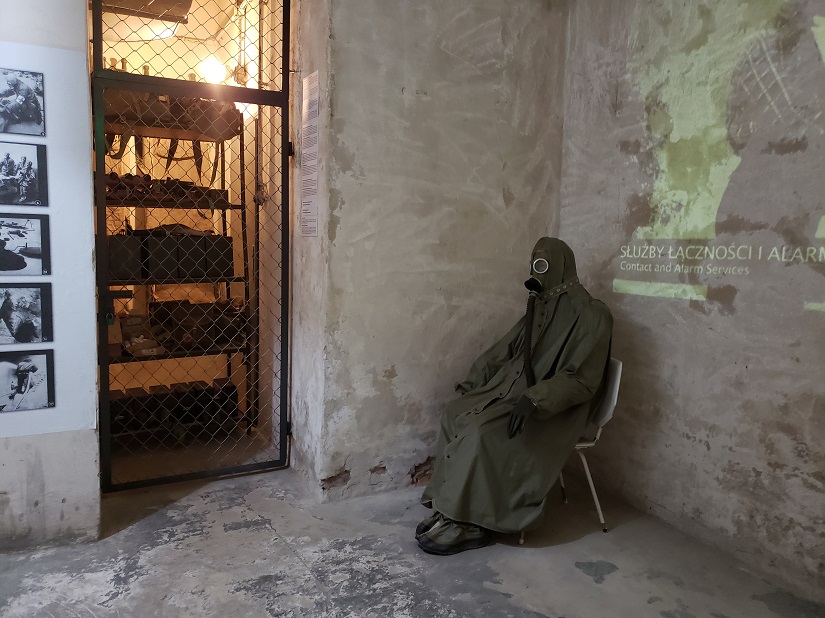
Nowa Huta wasn’t always part of Kraków. In times of Soviet communism in Poland, it was built as a separate city, outside of Kraków. It’s one of the only two planned socialist realist districts ever built and was meant to contrast the nearby city. Kraków was the past, Nowa Huta was the future.
Because of its history as one of the only executed Soviet plans for an utopian ideal city, anyone interested in an immersion into Soviet communist history will find this museum fascinating.
Inside the museum, you will gain information about both the history of communism in Poland and in Nowa Huta specifically. It’s one of the most interesting places to visit to understand what it meant for Poland to be under Soviet control. There was resistance to communism throughout all of Poland. The same was true in the place meant to be the “perfect” communist city.
Also, because this city was built during the Cold War, an extensive system of underground shelters was built under Nowa Huta. While you can’t explore them all, the section under the museum is open, with excellent exhibits detailing the procedure for possible nuclear attacks.
Nowa Huta is accessible by tram from Kraków’s city center. The museum is open daily 10:00-17:00, except Mondays.
Recommended by Natalie of Voyage Scribe
Neon Museum, Warsaw, Poland
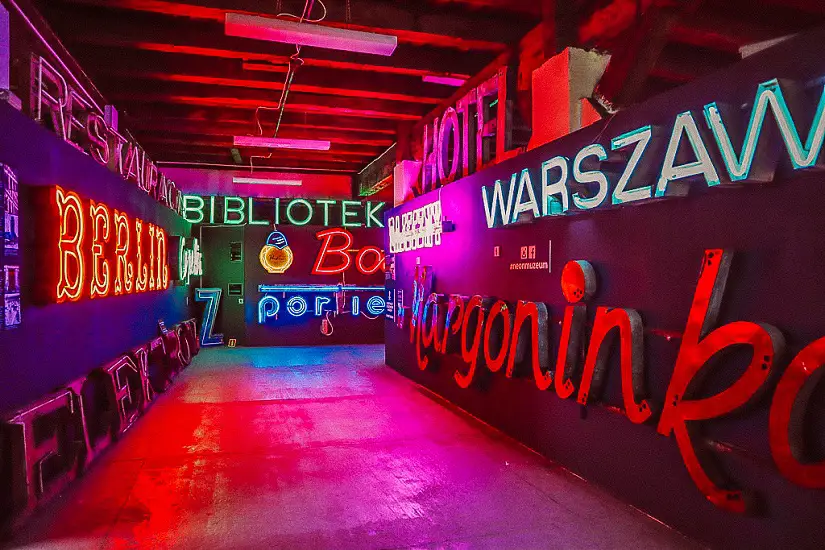
If you’re looking for an unusual communism-related museum in Europe, Poland’s Neon Museum is for you. It is one of the most intriguing places to visit in Warsaw. You’ll find it in the quirky Praga district on the premises of Soho Factory, an unique cultural space.
So how do neon signs have anything to do with communism? In the mid-50s, after a time when shop owners were only allowed to put small signs in their windows, new regulations approved the use of large forms of advertising such as neon signs, which were only used for art until then.
Of course, there were many restrictions and guidelines for using neon signs, like color, size, etc. But they became more and more popular and fashionable until the late 1970s. That’s when the economic crisis began, which was one of the reasons the signs were slowly removed, to save money on electricity and repairs.
Luckily, the Neon Museum was established to renovate, preserve, and document the signs from that era. The permanent exhibition includes about 100 neon lights from all over Poland with explanations about their history and artists. It is open from Thursday to Sunday between 12 and 6 PM and costs 15 PLN (about $4) to visit. You can also book guided tours for groups.
Recommended by Or from My Path in the World
The Nuclear Bunker Museum, Prague, Czech Republic
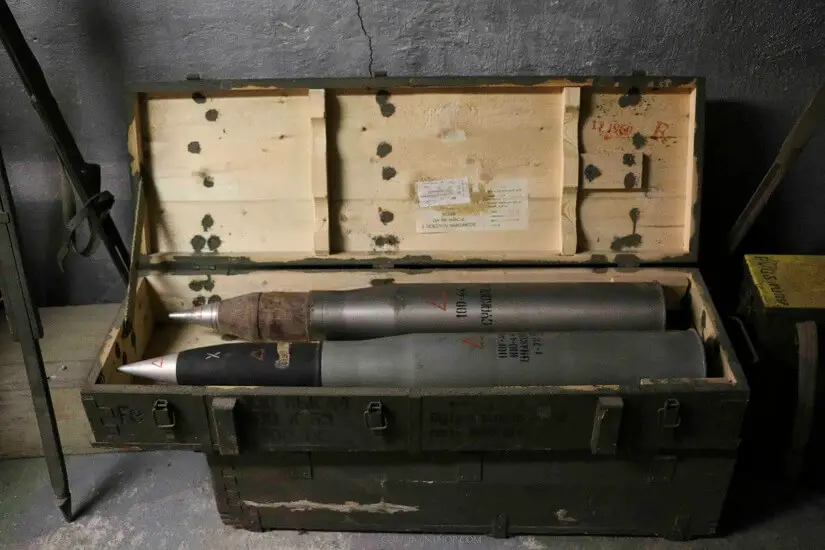
The Nuclear Bunker Museum is located in Prague, the capital city of the Czech Republic.
This museum was originally a five storeys deep bunker beneath the city’s Parukarka Hill during the Soviet era. It sits right behind a dilapidated wall painted with graffiti. The civilian bunker was built due to the fear of imminent nuclear disasters which was building up in the Cold War period. This bunker was to function as a safe space for civilians in case of a nuclear disaster.
Today, the nuclear bunker in Prague, as well as several other Communist sites in the city can be seen through a two-hour guided tour. This is the best opportunity to experience a glimpse of the dark era that clutched Europe during the late 1900s.
These tours invoke the difficulty of Soviet life and are sure to leave a chill or two running down your spine. From gas masks to photographs and newspapers, the Nuclear Bunker Museum in Prague houses lots of Cold War artefacts for visitors to see.
Tours run twice every day except for Christmas Eve, Christmas Day and New Year Day. It costs 700 Czech Koruna per person.
Recommended by Lavina of Continent Hop
Buzludhza, Bulgaria
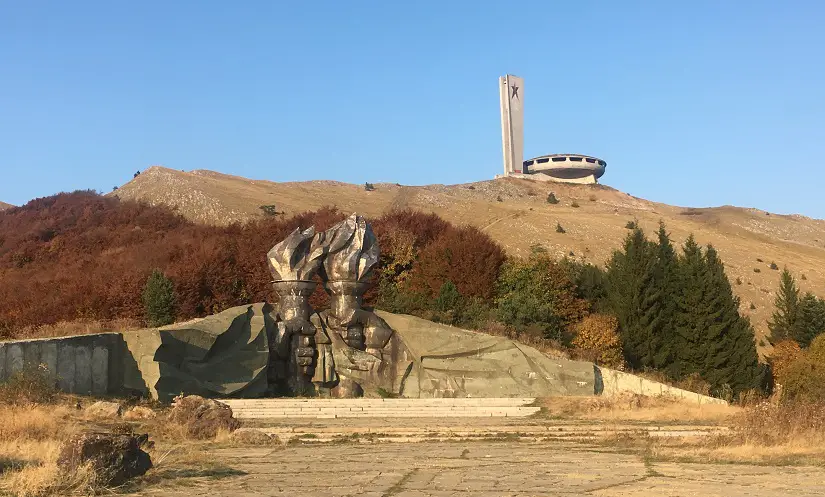
The Buzludzha monument located about 90 minutes from Bulgaria’s original capital city of Veliko Tarnovo could be mistaken for an UFO or the lair of an evil villain. It was built in the 1970s on the site of a 19th century famous Turkish-Bulgarian battle and is a monument to socialist communism.
Its official name is the Monument House of the Bulgarian Communist Party. Its more common name, Buzludzha, comes from the fact that it was built on the top of the Buzludzha mountain. The monument was finally inaugurated in 1981 and commemorates the events of 1891. Back then a group of socialists met here secretly to form a movement that led to the founding of the Bulgarian Social Democratic Party, which was itself a forerunner of the Bulgarian Communist Party.
You’ll need to take a tour or drive here, as there is no public transport to the site, which is set in a stunning landscape. The building itself is in a state of disrepair. Because safety reasons, it’s not currently possible to enter the interior. However, that shouldn’t deter you from visiting. The onsite guards will stop you from trying to enter the building, but the views of the exterior are worth the trip. There are loose plans to renovate the monument, but there is no actual timetable for completion.
One can visit Buzludzha at any time of the day (or night). Early evening or first thing in the morning is best for the light here and you’re unlikely to meet many people.
Recommended by Sarah of A Social Nomad
Seagull Wing Monument, Podgora, Croatia
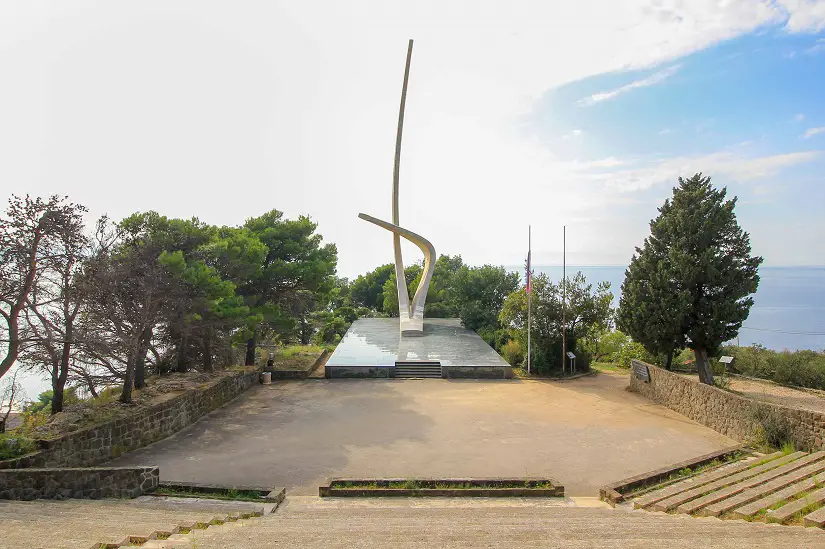
The Seagull Wing Monument is a war memorial located in Podgora, Croatia. Made of concrete, the monument consists of giant seagull wings. Here, the stretched wing symbolizes victory, while the broken wing is meant to commemorate the fallen marines. This communism attraction is located on a hill above the city and is the landmark of the beautiful seaside resort. From the top, you have a breathtaking view of the resort and the deep blue sea.
In the early 1960s the local communist party plans the construction of this monument. It aimed to commemorate the partisan fleet of the region. The architect Rajko Radović designed this object and it was unveiled on September 10, 1962 by Yugoslav President Tito himself. With a height of 32 meters, this monument is one of the highest in Croatia and is probably the tallest abstract sculpture in the country.
You can visit this monument all year round. It is located on the hill above the city and you can reach it by a short walk from the city center. The best time to visit it is in summer, when the landscape is at its best. The entrance to this monument is free of charge. There are no specific opening times.
Recommended by Martina & Jürgen of PlacesofJuma
Red History Museum, Dubrovnik, Croatia
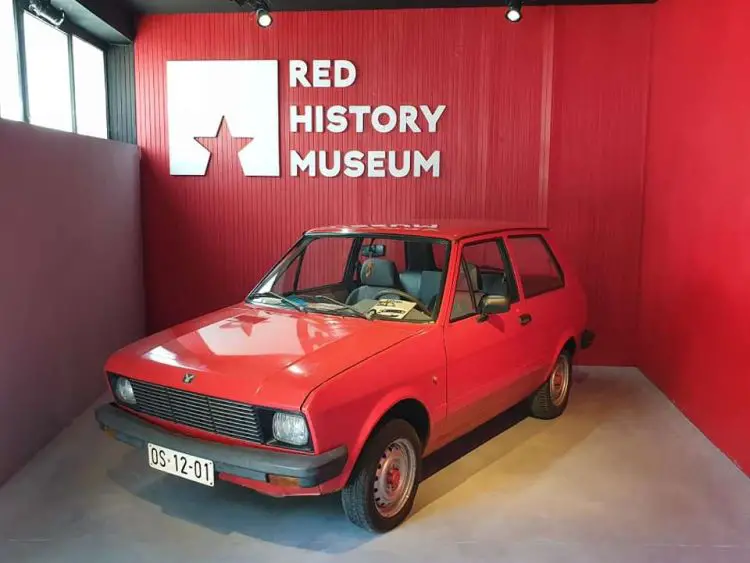
Dubrovnik, in Croatia, is a beautiful walled city, once a part of the Byzantine Empire. But for much of its modern history, it was a part of the Socialist Federal Republic of Yugoslavia.
Beginning after the Second World War, and ending with the Croatian War of Independence (the Homeland War) in the 1990s, Croatia’s history of socialism is documented in one of the very best Dubrovnik museums – the Red History Museum.
The museum is an immersive and interactive one. Inside you get to feel what everyday life would have been like in Yugoslavia. The first part of the museum explains how communism grew and spread in Croatia.
The second of the three exhibits is about everyday life. You can immerse yourself in an apartment decorated faithfully as during the socialist era. There is also an exhibit here that shows the dark side of communism – the secret agencies that enforced the authoritarian rule and communist principles of Yugoslavia.
The final part of the exhibition is a memory tunnel where Croatians from all over the country have donated pictures of their memories of Croatia’s red history.
You can find the Red History Museum in the Carbon Graphite Products Factory at Vetog Kriza 3. It’s open every day from 10 am to 10 pm.
Recommended by Monique at Trip Anthropologist
House of Flowers, Belgrade, Serbia
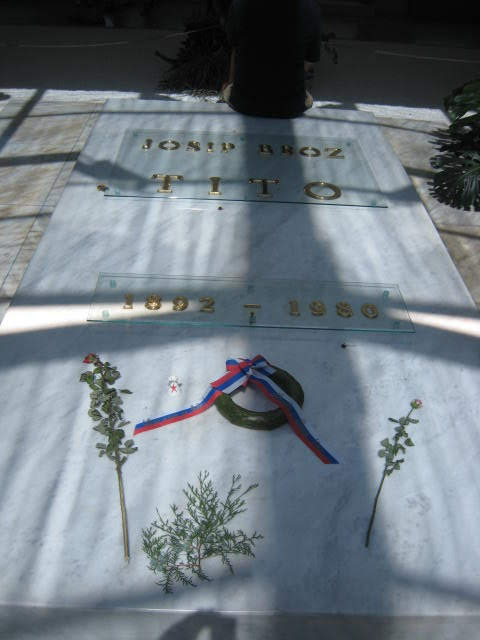
House of Flowers, originally Kuća cveča, is the mausoleum of Tito, aka Josip Broz (1892-1980). He was a Yugoslav communist revolutionary and statesman. Tito was also the leader of the Partizan guerrilla fighting Nazis. After WWII he created the Socialist Federal Republic of Yugoslavia and was its president for 35 years, until his death in 1980. With the Non-Aligned Movement, he chooses a middle path between NATO and SSSR in 1961. It was established with Egypt (Nasser), India (Nehru), and later others.
As a statesman, he was well respected and at his funeral, there were four kings, 31 presidents, six princes, 22 prime ministers, and 47 ministers of foreign affairs, from both sides of the Iron Curtain. Representatives from 85% of countries listed at the UN at that time were there. It was the first time in history when one funeral had such an attendance and probably last. A decade later Yugoslavia dissolved in a bloody war and the mausoleum was closed.
Today it is reopened as a part of Muzeja Jugoslavije on Dedinje, where one can see 70 years of history of all Yugoslavia transitions. But without official guards and the many flowers from before, just white marble. The entrance fee is less than 4 euro. You can visit it from Wednesday till Sunday; 10:00 – 18:00. So far, more than 17 million people visited this place.
Recommended by Džangir Kolar of DrJamTravels
House of Leaves or Museum of Secret Surveillance, Tirana, Albania
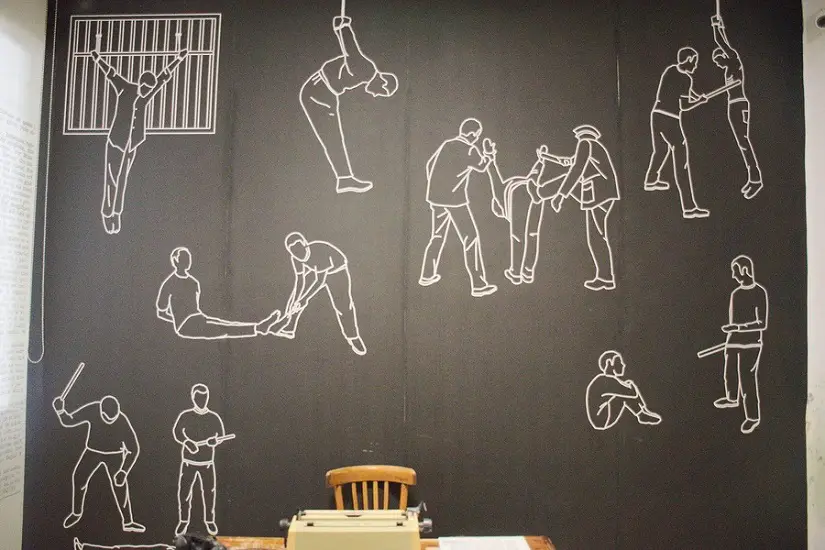
Housing the Museum of Secret Surveillance, the House of Leaves in Tirana is dedicated to the many innocent people who were under surveillance and then arrested and executed by Albania’s communist regime. The building used to be the headquarters of the Albanian secret police, Sigurimi. Although you can still see how beautiful the old villa must have once been, its dark past is very well presented in this museum, which is a must-see when you visit Tirana.
At first, the building was used as a clinic, but during Nazi Germany’s occupation of Albania, it was used by the Gestapo. At the end of the Second World War, the Sigurimi turned it into its headquarters. Hidden behind many trees and leaves, nobody was supposed to know what went on inside the building. The 31 rooms of the museum portray different aspects of surveillance in communist Albania, from different methods of intercepting communication to torture. There are technological displays as well as various documents (in the Albanian language). But these are brought to life by other displays such as a typical living room from 1970s Albania.
In 2020, the Museum of Secret Surveillance won the European Museum of the Year Award, a well-earned award as the museum approaches the subject respectfully, without trying to turn it into a show. There simply is no need for exaggeration or overstating anything because the facts are shocking enough as they are.
You can visit the House of Leaves from Monday to Sunday between 9 am and 7 pm.
Recommended by Nina of Lemons and Luggage
Museum of the 2nd AVNOJ, Jajce, Bosnia & Herzegovina
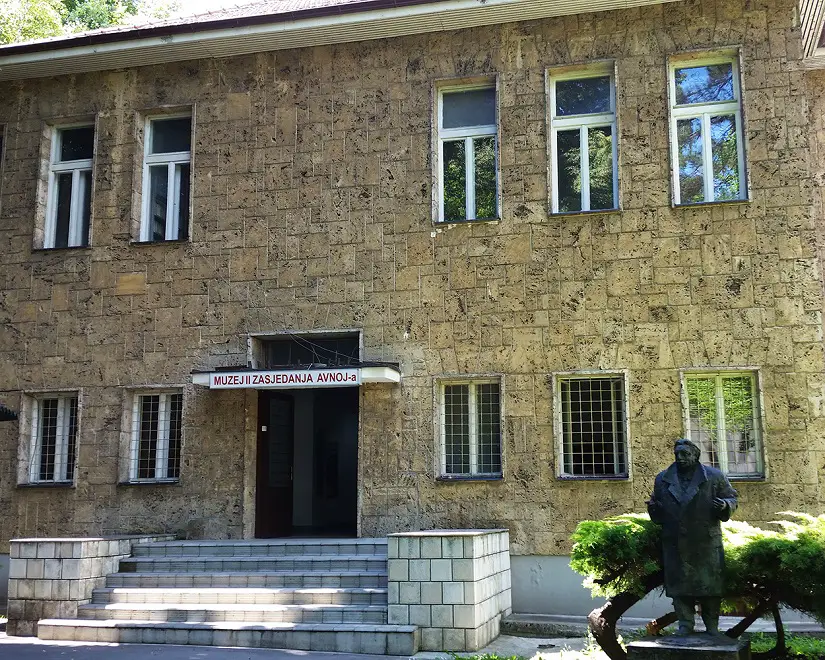
The small town of Jajce, Bosnia is nestled in a lush, green valley. A breathtaking waterfall is one of the main draws for visitors. Though you wouldn’t know it by simply looking around, the location also played an important part in the post-WWII creation of the Socialist Federal Republic of Yugoslavia.
On the 29th and 30th of November, 1943, delegates from eight regional areas gathered here to make decisions about the future of the region. By the end of their meeting, the delegates had declared themselves the supreme legislative body for the newly formed government and bestowed the title of Marshal of Yugoslavia to Josip Broz Tito.
Today, the building where the meeting was housed has been turned into the Museum of the 2nd AVNOJ, commemorating the event. Visitors can walk through a reconstruction of the council chamber which has been filled with artifacts from the time period. Flags from the eight regions hang on the walls along with photos and documents displayed throughout.
Because the town is well off the beaten tourist path, there truly isn’t a bad time to visit. The museum is open from 8am to 6pm every day of the week, with the exception of certain holidays. Tickets are purchased inside the building for 2 KM.
Recommended by Annie of Into the Bold
This are some of the places we can visit in Europe to learn more about what communism meant and its consequences. Romania, as an ex-communist county also has its share of red tourism sight, but I’ll present them in a future article.
Travel With A Spin contains affiliate links. If you make a purchase through these links, I will earn a commission at no extra cost to you. Thanks for reading!
